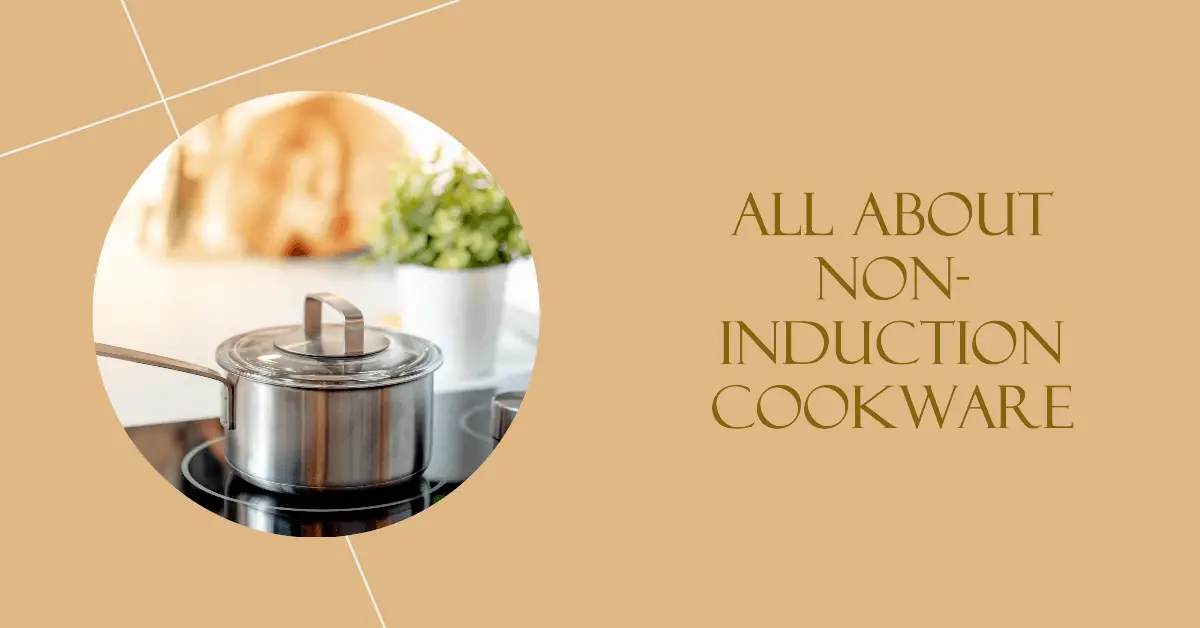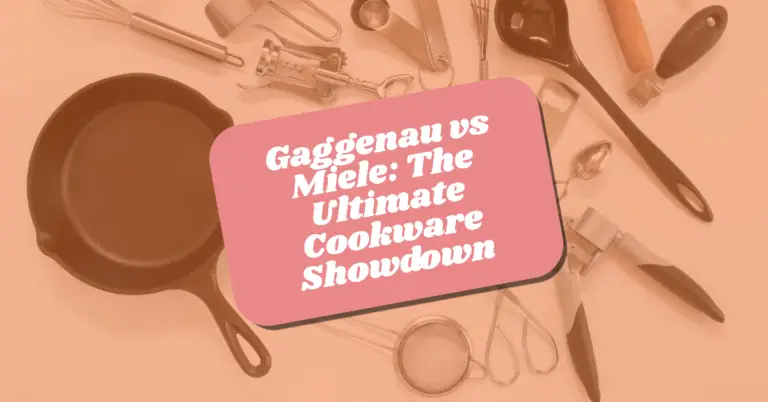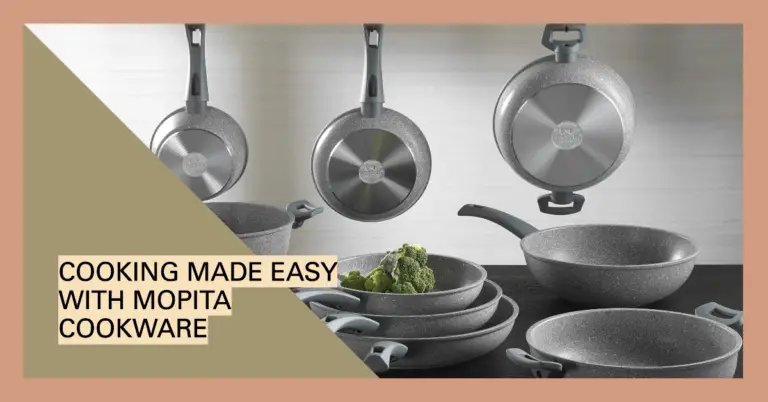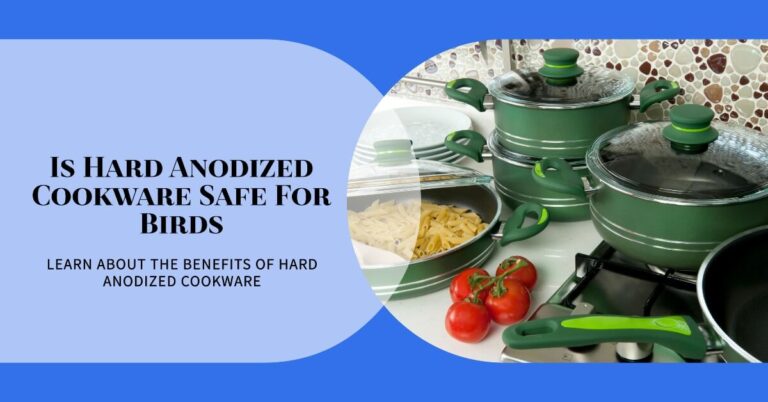What is Non Induction Cookware? A Complete Guide for Beginners

Have you ever wondered why some pots and pans don’t work on induction cooktops? The key lies in the actual composition of the cookware. Non induction cookware refers to pots, pans, and other cookware made from materials that are not compatible with induction ranges and cooktops.
Induction cooking relies on electromagnetic energy to heat the cookware directly, rather than heating the stovetop surface itself. This requires cookware made with certain metals that can interact with the electromagnetic field in order to function. If the cookware cannot get activated by the induction field, it simply won’t heat up.
Non induction cookware is made from materials that lack the properties needed to work on induction. But these pans are still widely used today for a variety of reasons.
In this complete guide, we’ll cover everything you need to know about non induction cookware including:
- What materials make cookware non compatible with induction
- The pros and cons of common non induction cookware types
- Reasons why non induction cookware is still commonly used
- Safety tips for using non induction cookware
Let’s get started!
Why Use Non Induction Cookware?
With the rising popularity of induction ranges in recent years, you may wonder why anyone still uses non compatible cookware. There are a few key reasons:
Lower Cost
Materials like aluminum and stainless steel that make up most non induction pots and pans are generally more budget-friendly than induction-compatible options. This makes non induction cookware ideal for assembling large cookware sets or outfitting a kitchen on a budget.
Induction-friendly cookware like cast iron or tri-ply stainless steel tend to be more expensive due to their high-quality construction and materials. Non induction alternatives provide a more affordable way to stock up a kitchen with all the necessities.
Access to More Cookware Styles
Certain specialty cookware pieces like copper pots, ceramic pots, and glass bakeware are not induction compatible. But they can offer unique benefits to cooking and baking that appeal to many home cooks.
Using non induction cookware provides more versatility to utilize these material types without being limited to only induction-safe cookware. This allows choosing pans based on their performance merits rather than induction compatibility.
Use on All Stovetops
One of the big advantages of non induction pots and pans is that they work on all stovetop types. This includes gas, electric, ceramic, halogen, etc. With an induction-only set, you would be limited to using those pans with that stove type.
Non induction cookware provides flexibility if you change stove types or want to use the pans at someone else’s house. You don’t have to worry about compatibility issues.
What Materials Are Non Induction?
Now let’s take a closer look at exactly what makes cookware non compatible with induction ranges.
Induction cooking relies on magnetic induction between the stovetop coils and metals in the cookware that contain iron. When iron molecules vibrate rapidly from the magnetic field, it creates friction and heat.
For metals to interact properly, they must be ferromagnetic. The most common ferromagnetic metals used in induction cookware are cast iron, carbon steel, and stainless steel. Some enamel coated cast iron pots can also work.
On the other hand, non induction cookware is made from non-ferromagnetic metals and other materials that lack magnetic properties sufficient for induction.
The most common cookware materials that do NOT work on induction include:
- Stainless steel
- Aluminum
- Copper
- Ceramic
- Glass
Let’s examine the properties that make each of these materials non compatible:
Stainless Steel
Stainless steel cookware is hugely popular in home kitchens. But the type of stainless steel used is not the same ferromagnetic kind optimized for induction.
Standard stainless steel is made of iron alloyed with chromium and nickel. This creates a material with corrosion resistance that is durable and easy to maintain.
But the chromium and nickel alter the magnetic permeability of the steel. So regular stainless steel pans cannot effectively generate heat when placed on an induction cooktop.
There are some specialty stainless steel cookware lines designed specifically for induction using different alloys. But most conventional stainless steel pots and pans do not work.
Aluminum
Aluminum is a non-ferrous metal, meaning it does not actually contain iron that is essential for responding to magnetic induction fields.
In its pure form, aluminum has poor magnetic permeability. Some types of anodized aluminum can work to an extent if the base contains iron. But most aluminum cookware is not induction compatible.
Copper
Like aluminum, copper is a non-ferrous metal that lacks any iron content. This means copper cookware does not generate heat when exposed to the electromagnetic field created by an induction stovetop.
Pure copper pots and pans are prized for their super heat conductivity. But this benefit only applies to traditional cooktops, not for induction cooking.
Ceramic
Ceramic cookware offers a sleek, stylish, and non stick cooking surface. But the ceramic material itself does not contain iron or any ferromagnetic metals able to interact with induction.
Some ceramic cookware has an underlying base made with a magnetic metal that allows it to heat up on induction. Without this though, most 100% ceramic pots and pans won’t work.
Glass
Glass bakeware and cooking pans provide see-through visibility ideal for monitoring food. But glass itself is a non-metallic material devoid of any iron content.
As an insulator unable to conduct heat itself, glass cookware relies on heat transfer from the stovetop. This makes glass pans incompatible with induction ranges.
Now that we’ve covered the materials that don’t work on induction, let’s move on to analyzing the benefits and downsides of some of the main non induction cookware types.
Pros and Cons of Common Non Induction Cookware
There are a wide variety of non induction pots, pans, and bakeware available. Let’s break down the advantages and disadvantages of the most common varieties:
Stainless Steel Cookware
Stainless steel cookware is affordable, durable, and low maintenance. But it’s not the best heat conductor.
Pros of Stainless Steel Cookware:
- Budget-friendly price point
- Resists corrosion and rust
- Provides even, uniform heating
- Easy to clean by hand or dishwasher
- Non-reactive cooking surface
Cons of Stainless Steel Cookware:
- Relatively poor heat conductor
- Can discolor or stain over time
- More prone to hot spots without perfect heat distribution
- Tends to show fingerprints and water spots
With some drawbacks related to heat conduction, stainless steel excels based on convenience, durability, and cost. It’s a workhorse material perfect for everyday cooking needs.
Aluminum Cookware
Known for being an excellent heat conductor, aluminum cookware heats up quickly and evenly. But it requires more maintenance.
Pros of Aluminum Cookware:
- Highly conductive properties spread heat fast
- Very lightweight and easy to maneuver
- Low cost makes it budget friendly
- Simple to hand wash and maintain
Cons of Aluminum Cookware:
- Reactive to acidic foods, can cause metallic taste
- Softer metal prone to dents and warping
- Can leach aluminum into certain foods
- Requires seasoning for optimal performance
With proper use and care, aluminum’s stellar conduction makes it a cook’s favorite. But it lacks the set it and forget it ease of use that some cooks prefer.
Ceramic Cookware
With a sleek glass-like surface, ceramic cookware offers even heating without sticking. But the material lacks durability.
Pros of Ceramic Cookware:
- Distributes heat evenly and smoothly
- Provides a non stick cooking surface
- Available in beautiful and modern designs
- Usually safe to use with metal utensils
Cons of Ceramic Cookware:
- Fairly heavy, especially when full
- Prone to chipping and staining over time
- Not recommended for use in the oven
- Can crack from sudden temperature changes
For cooks who love the smooth performance and stylish look of ceramic, taking care of these delicate pots and pans is a must.
Glass Cookware
From baking dishes to stove-to-oven pans, glass cookware allows seeing your food cook. But it lacks versatility and durability.
Pros of Glass Cookware:
- Provides visible monitoring as food cooks
- Distributes heat evenly and smoothly
- Non reactive material won’t affect taste
Cons of Glass Cookware:
- Not very durable or resilient
- Can easily chip, crack, or shatter
- Heavy, especially baking dishes
- Not safe for direct flame or under broiler
For specialized tasks like casserole dishes, glass bakeware shines. But for general stovetop cooking, it poses more risks than benefits.
By understanding the core pros and cons of each non induction material, you can select the right cookware to match your cooking needs and induction compatibility requirements.
Now let’s cover some of the key reasons non induction cookware is still widely used today despite induction’s rise in popularity.
Why Many Cooks Still Use Non Induction Pots and Pans?
While induction ranges offer faster boiling times, improved temperature control, and greater efficiency compared to gas or electric, cooking with non induction pans is still the norm in most kitchens. Here are some of the top reasons why:
1. Existing Cookware Works Fine
For home cooks who already own a full set of pots and pans they are happy with, there may be no compelling reason to replace all their cookware. Sticking with non induction pans many already have keeps costs down.
Unless the cookware is badly damaged, switching out functioning pans solely for induction compatibility may not seem necessary. Cooks can simply opt for a non induction stove instead.
2. Specialty Cookware Has Benefits
As mentioned earlier, some specialty non induction cookware provides advantages that appeal to certain cooking methods. For example, using a authentic French copper pan or ceramic skillet for eggs can provide the ideal cooking experience.
Rather than miss out on their favorite pan, some cooks decide to forego induction to be able to keep using these pieces. Function takes priority over compatibility.
3. Lower Cost
Buying an entirely new set of quality cookware compatible with induction represents a significant added cost on top of purchasing the induction range itself.
For home cooks upgrading stoves on a budget, sticking with more affordable non induction cookware helps keep costs down. This allows allocating more funds to the stove itself.
4. Future Flexibility
There is always a chance that a home cook may decide to switch back to a gas or electric range in the future after using induction.
Rather than be locked into induction-only cookware, some cooks opt to keep non induction pans to preserve flexibility. Having cookware that works across all stove types guarantees options down the road.
5. Lack of Experience
For those unfamiliar with induction cooking, transitioning to completely different cookware can feel intimidating. Sticking to their tried and true pots and pans feels safer and less risky.
Once a cook gains experience with induction cooking benefits, making the switch to more optimized cookware often follows. But in the beginning, non induction pans feel reassuring.
By understanding what matters most to home cooks, we can better appreciate why non induction often wins out. Now let’s go over some important safety tips.
Is Non Induction Cookware Safe to Use?
While non induction pans don’t work directly on an induction cooktop, they are generally safe to use in the kitchen as long as you follow some basic precautions:
- Always use potholders or oven mitts when grabbing hot cookware, regardless of the material. Sudden contact with extremely hot metal or ceramic can cause serious burns.
- Avoid putting non induction pans under the broiler. The intense direct heat can damage many material types not meant to withstand the very high temperatures.
- Ensure handles are securely attached before using any cookware. Loose handles present a burn or spill hazard if they detach unexpectedly when full of hot food.
- Prevent thermal shock by avoiding extreme temperature swings. Do not plunge hot non induction pans into cold water or place a frozen glass dish directly into a hot oven. Gradual change is best.
- Stay vigilant when cooking over direct flame. Some materials like glass may shatter from the concentrated heat. Watch for scorching or burning.
- Let non induction pans cool fully before washing. Adding cold water to an extremely hot empty pan can warp or crack it. Allow it to cool down gradually.
By taking appropriate care when cooking and cleaning, non induction cookware can be entirely safe to use daily. Just be sure to follow any specific use and care instructions from the manufacturer.
Now let’s wrap up with a quick summary of everything we learned about non induction cookware.
Conclusion: Key Takeaways on Non Induction Cookware
- Non induction cookware refers to pots, pans, and other cookware not compatible with induction cooking due to their composition. Materials like stainless steel, aluminum, and glass lack magnetic properties to heat up on induction.
- There are good reasons to still use non induction pieces like lower cost, access to specialty cookware, flexibility across stove types, and retaining existing pans.
- Know the pros and cons of materials like stainless steel, aluminum, ceramic, and glass to select the right non induction cookware for your needs.
- Non induction cookware is generally safe when basic precautions are followed. Allow pans to cool before cleaning, avoid thermal shock, and use potholders for hot pans.
- With the right education on its benefits and limitations, non induction cookware can absolutely be an ideal choice for select cooking tasks. Prioritize what matters for your needs.
So there you have it! Everything you need to know to understand non induction cookware and decide if it’s the right choice for your kitchen. Thanks for reading!



